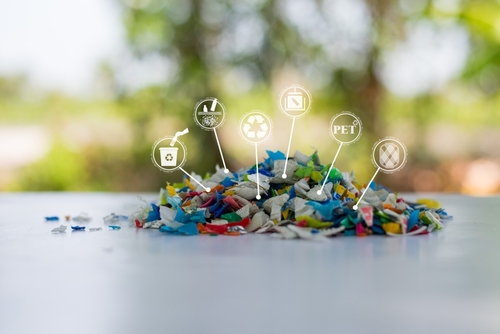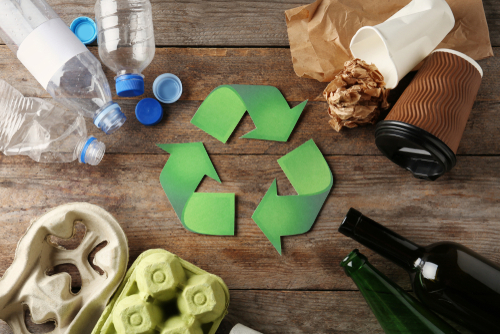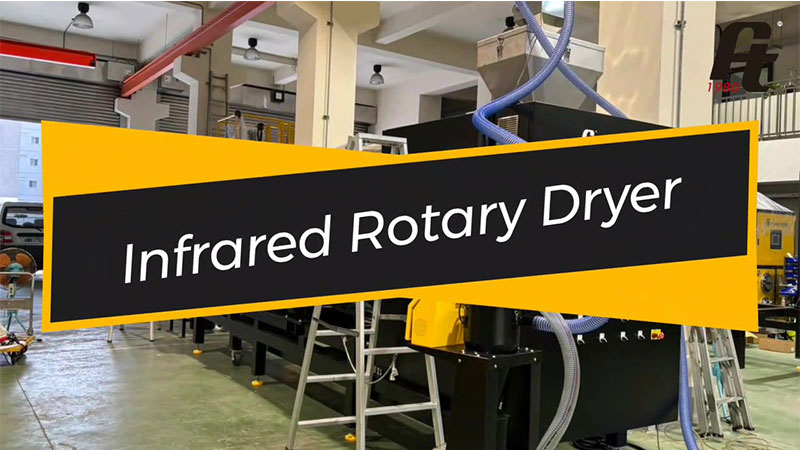Transforming Industries: The Evolution of PET and rPET in Packaging Solutions
- 2024.05.16
 Flying Tiger
Flying Tiger
Introduction
Polyethylene terephthalate (PET) is a versatile plastic widely recognized as a foundational material in contemporary packaging. Known for its strength, clarity, and recyclability, PET is extensively used across various industries, including food and beverage, pharmaceuticals, and personal care. Its properties allow for lightweight packaging solutions that maintain product integrity while reducing transportation costs.
In response to growing environmental concerns, recycled PET (rPET) has emerged as a sustainable alternative to traditional PET. Derived from post-consumer plastic products, rPET utilizes existing materials to create new packaging, thereby reducing the reliance on virgin resources and minimizing waste. The adoption of rPET not only supports waste reduction but also promotes a circular economy where materials are reused and repurposed. As industries continue to prioritize sustainability, rPET is increasingly favored for its environmental benefits and its role in fostering responsible consumption and production patterns. This shift marks a significant step towards more sustainable packaging solutions, aligning with global efforts to mitigate environmental impact.
Understanding PET and rPET
What is PET?
Polyethylene terephthalate (PET) is a widely used plastic in the packaging industry, valued for its clarity, strength, and ability to form a barrier against gases and moisture. It is commonly used to package beverages, food, and other consumables.
What is rPET?
Recycled polyethylene terephthalate, or rPET, is derived from post-consumer PET material that has been collected, cleaned, and reprocessed into new products. The use of rPET provides substantial environmental advantages by reducing waste, conserving resources, and lowering greenhouse gas emissions. It plays a significant role in promoting sustainable production and consumption by extending the lifecycle of the initial PET material.
Key Differences
The main differences between PET and rPET lie in their production and environmental impact. Unlike PET, which is produced from petrochemicals, rPET is created by recycling used PET products, thereby reducing the demand for virgin resources and minimizing waste. The production of rPET uses less energy and emits fewer carbon emissions compared to virgin PET. Furthermore, rPET’s role in the circular economy is crucial, as it emphasizes the reuse and recycling of materials, promoting a more sustainable approach to resource management. Through these processes, rPET helps mitigate the environmental burden of plastic production, supporting global efforts toward a more sustainable and responsible plastic economy.
Weighing Benefits of PET and rPET
Recycling PET: Impacts on Sustainability
Recycling PET significantly aids environmental sustainability by reducing landfill waste and conserving natural resources. The process involves collecting and processing used PET into flakes or pellets, which can then be transformed into new products. This not only extends the lifecycle of the plastic but also decreases the need for virgin materials derived from non-renewable resources like petroleum. Additionally, recycling PET requires less energy compared to producing new PET, resulting in lower carbon emissions and a reduced environmental footprint.
PET vs. rPET: Environmental and Quality Comparison
When comparing PET and rPET, both share similar physical properties such as durability and clarity, making rPET an effective substitute for virgin PET in many applications. Environmentally, rPET offers a distinct advantage by minimizing the use of raw, finite resources and reducing waste. The production of rPET generates significantly lower carbon emissions, conserving energy and reducing pollution. In terms of quality, modern recycling technologies have advanced to the point where rPET can match and sometimes even exceed the quality of virgin PET, especially in terms of processing versatility and product integrity.
Recyclability of rPET
rPET plays a pivotal role in the circular economy by demonstrating excellent recyclability. It can be recycled multiple times without significant degradation in quality, contributing to continuous material reuse. This characteristic is crucial for reducing plastic pollution and fostering sustainable production patterns. The ability to repeatedly recycle rPET into new products diminishes the reliance on virgin plastic production, aligning with global sustainability goals to reduce resource consumption and enhance waste management practices. By embracing rPET, industries can significantly influence the reduction of environmental impacts associated with plastic use, promoting a more sustainable future.

Safety and Sustainability in PET Packaging
Safety of rPET Plastic
Concerns about the safety of rPET for packaging purposes have been thoroughly addressed through stringent regulatory standards and continuous testing. rPET is approved by major health and safety agencies for contact with food and beverages, as it undergoes a rigorous purification process to remove any potential contaminants. The process ensures that rPET provides the same high level of safety as virgin PET, making it suitable for a wide range of packaging applications. This reassurance allows consumers and manufacturers to trust rPET as a safe, sustainable choice for packaging needs.
Advantages of PET Packaging
PET packaging offers several benefits that make it a preferred choice for businesses and consumers alike. It is lightweight, reducing transportation costs and carbon emissions associated with shipping. PET is also highly customizable, allowing for innovative designs and branding opportunities. Its clarity and barrier properties ensure that the contents are well-protected and maintain their quality, enhancing consumer satisfaction and extending shelf life. These properties make PET an economically and functionally attractive option for industries ranging from beverages to personal care.
Sustainable Advances with rPET
rPET significantly enhances the sustainability of the packaging industry. By utilizing post-consumer recycled materials, rPET reduces the demand for virgin resources, thereby decreasing waste and environmental impact. The production of rPET uses less energy and emits fewer greenhouse gases compared to virgin PET production. As industries adopt rPET more broadly, they contribute to a reduction in plastic pollution and support a move towards a circular economy, where materials are continuously repurposed and reused. This transition is critical for building sustainable business practices and promoting environmental stewardship in the long term.
Implementing PET and rPET Solutions
Steps for Businesses
For businesses looking to integrate rPET into their packaging strategies, the first step is conducting a thorough assessment of current packaging materials and identifying opportunities for substitution with rPET. Engaging with suppliers who specialize in high-quality recycled plastics is crucial. Implementing rPET requires adjustments in sourcing, manufacturing, and possibly design, ensuring that the switch does not compromise product quality or customer satisfaction. Training and educating staff about the benefits and handling of rPET can also facilitate smoother transitions and foster an environment supportive of sustainable practices.
Consumer Influence
Consumer preference plays a pivotal role in the adoption of sustainable packaging solutions. As awareness of environmental issues grows, more consumers are favoring products packaged in sustainable materials, such as rPET. Businesses can leverage this trend by marketing the environmental benefits of their rPET-packaged products, thereby not only meeting consumer demand but also encouraging competitors to consider similar sustainable practices. Demonstrating a commitment to sustainability can enhance brand loyalty and reputation, driving sales and differentiating products in competitive markets.
To learn more about integrating rPET in your business and contributing to a more sustainable future, learn more about Flying Tiger’s PET flake recycling solutions. Discover how your business can take practical steps towards impactful environmental stewardship.
Back







